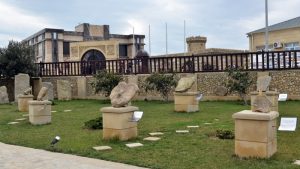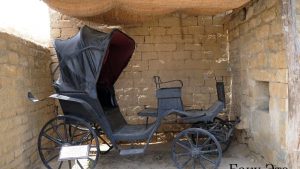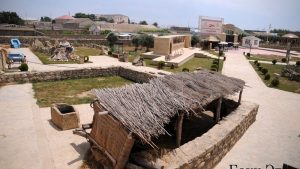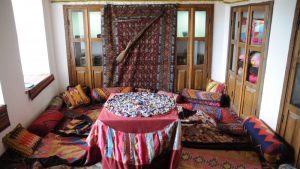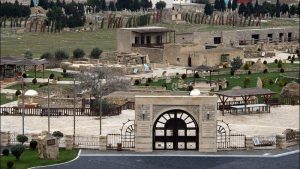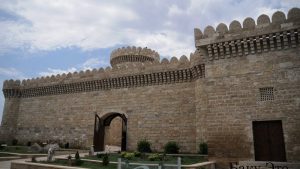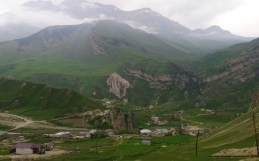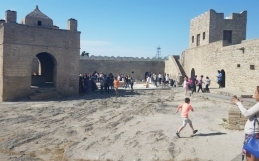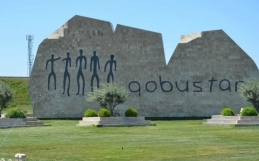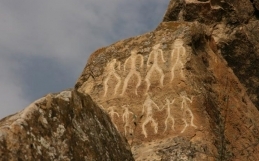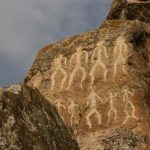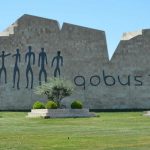DETAILS
Duration: 5-6 hours
Itinerary: Ateshgah Temple, Gala Museum Complex and Yanardag
Pick-up & Drop-off: your hotel (within Baku)
Category: Private tour
Language: English
PRICES & BOOKING
Prices (per person in USD):
| 1 pax. | 2 pax. | 3 pax. | 4 pax. | 5 pax. | 6 pax. | 7 & more pax. | |
| Tour with guide | 110 | 55 | 45 | 40 | 35 | 30 | upon request |
| Tour without guide | 60 | 35 | 30 | 25 | 20 | 15 | upon request |
| VIP* | upon request |
*VIP package – Our company will provide you with the wide range of luxury cars (Mercedes S class, E class, V class and etc.)
INCLUSIONS
Pick-up & Drop-off at your hotel (inside Baku)
Personal English speaking guide (other languages on request)
Personal Driver & air-conditioned vehicle
EXCLUSIONS
Entrance fees
Food and drinks
Insurance
DESCRIPTION
Ateshgah Temple – Ateshgah Temple is one of the places that come in the first page of not only Azerbaijan history, but also world history. It’s located 30 km from the center of Baku in the suburb of Surakhany. This territory is such unique natural phenomenon as burning natural gas outlets (underground gas coming onto surface contacts oxygen and lights up). The name “Ateshgah” comes from Persian language and means “home of fire”. Based on Persian and Indian inscriptions the temple was used as a Hindu, Sikh and Zoroastrian place of worship. The temple in its present state was constructed in the 17th-18th centuries. It was built by the Baku-based Hindu community related to Sikhs. However, the history of the Temple is even longer. From times immemorial this was the holy place of Zoroastrians- fire worshippers. After the introduction of Islam Zoroastrian temple was destroyed. Many Zoroastrians left to India and there continued their worship. But in the 15th -17th centuries the Hindus-fire worshippers who came to Absheron with trading caravans began to make pilgrimages to Surakhany. The Indian merchants started erection of the temple. The earliest temple part is dated 1713. The latest – the central temple-altar was built with the support of merchant Kanchangar in 1810. During the 18th century chapels, cells, a caravanserai were added to the central part of the temple. The complex was turned into a museum in 1975.
Gala Archaeological and Ethnographic Museum Complex – Gala Archeological-Ethnographical Museum complex was established in ancient Gala village in the territory of Khazar district, Baku city in 2008. Here you will be able to see the ancient history of Gala village – lifestyle of the people living in Gala village since B.C. III millennia up to day, barrow, tombs, dwelling houses, remnants of ancient castle, 5 mosques, 3 bathhouses, and etc. are lively reserved. Pottery and baker shops are still functioning today as were in the Middle Ages. In Gala monument complex, dwelling settlements dating back to the Bronze Age, rock engravings, ancient foundations, remnants of primitive walls, two underground roads on the Caspian Sea and Baku directions dating back to X-XIV and X-XV centuries, a tandir (oven made of clay in the ground) – memory of XVIII century, Gavaldash (tambourine stone), ceramics, domestic and jewelry items, arms and coins, conserved remnants of ancient dwelling complex and etc. are exhibited.
Yanardag – Yanar Dag (Burning Mountain), which is located 25 km to the north from Baku. Actually, it is rather a hill than a mountain, with natural gas burning on its slope from ancient times. Meter-long tongues of fire are licking the stratified earth approximately for 10 m in width. These natural flames must have amazed and terrified people in history, and it doesn’t come as a surprise that the natural fires of Azerbaijan are considered to have played a crucial part in the creation of Zoroastrianism — a mystical faith, centered around ceremonial fire cults, which appeared in the region around 2,000 years ago. From the year 2007 Yanar Dag is declared a state-protected conservation area.
ADDITIONAL INFO
Optional sites: Mardakan Castle, Ramana Castle

